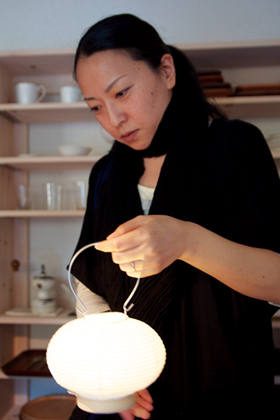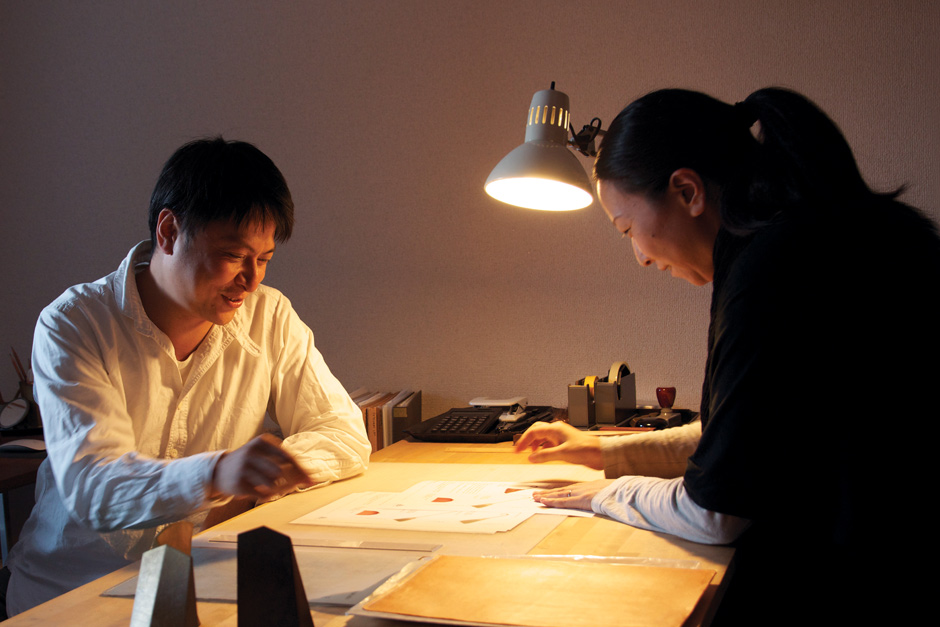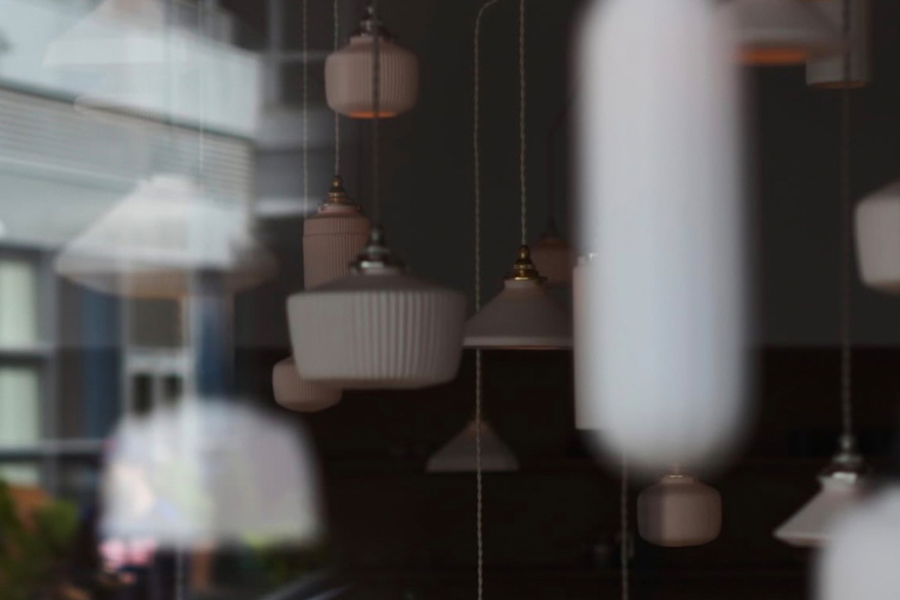Design Insights: A Conversation with Rina Ono

I first meet Rina Ono awaiting me at the exit of the JR Kawagoe Station, when I arrive to this distant borough of Tokyo. It’s always a thrill for me to meet fellow designers, but particularly when one has designed products that I use everyday like Cara tableware.
Whether it be dishes, cutlery or glasses, I’ve always been enchanted by tableware. Mainly because there are many aspects of tableware that have always made me feel like they were valued objects. Often made with glass, ceramics and metals, they can be quite precious and always felt like objects to be treated delicately. It’s rare to see contemporary interpretations made with wood so when I first came upon the Cara tableware set designed by Rinao Design Studio, I was naturally drawn to it and had to immediately contact the designer. They were beautiful and felt timeless and I knew I’d be gifting these sets or passing them down at any chance I got. I believe wood and tableware is a great match and I was curious to learn more about what inspired the designer.
Meeting Rina gave me a sense that her process was very organic, learning as much from her collaborators as she does from the materials she chooses. “I get inspiration from things like seeing the skill of a craftsman in front of me or taking a material in my hands,” Ono would convey. An approach that considers all factors to the creation of an object and evidently manifests inspiring results. I am excited to see what else Rina has up her sleeve.
The interview was conducted in English and Japanese. Both languages are published so as to not lose meaning in the translation for native readers.


How did you get started designing products?
RO: I’ve had an interest in things like building and garden design since I was little. I actually also worked for a period in an architect’s office before I started freelancing. It gave me a chance to think about the scale of product that would be enjoyable to have and use myself.
小さい頃は建物や庭のデザインに興味がありました。 実際にも、フリーランスで活動を始める前には建築設計の事務所で仕事をしていた時期もあります。いろいろなデザインを学ぶうちに、自分が持ったり使ったりできるサイズのプロダクトを考えることが楽しいと思ったのがきっかけです。
What is your primary goal when you design?
RO: When you encounter different creators, different materials, or the like, new challenges arise. I design with the goal in mind of finding a form that both takes advantage of factors like the skills of the craftsman, the attractiveness of the material and the lifestyle of the person using it.
いろいろな素材や作り手さんに会う度に新しい挑戦が始まります。作り手さんの持つ技術や素材の魅力を活かした形を見つけること、その形が使う人の生活になじむことを目標にデザインをしています。
How do you want to influence people’s lives as a product designer?
RO: If someone’s everyday life is made even a bit more enjoyable through the things I design, I’m happy.
ものを通して、普段の生活がささやかでも楽しくなればいいなと思います。
Can you give me some insights into how you work? Do you like to draw? Build models?
RO: First of all, I have a look at the manufacturing site, and think of ideas once I understand the craftsman’s production process. Depending on the item, I might make any number of sketches, but in most cases I first make a simple sketch, then begin building a model. At other times, I might get an idea from some scribblings I’ve offhandedly made, thumbnail sketches if you will. Finally, while actually observing the state of production at the manufacturing site, and speaking with the craftsman, I settle on a final form.
まずはものづくりの現場を拝見して、作り手さんの工程を理解してからアイディアを考えます。ものによっては、何遍もスケッチを描くこともありますが、多くは はじめに簡単なスケッチを描き、模型をつくりはじめることが多いです。また、何気なく描いていた落書き(サムネイル・スケッチ)からアイディアを得ることもあります。最終的には、実際にものづくりの現場で制作の様子を眺めたり、作り手さんと話しながら形を決めます。

“If someone’s everyday life is made even a bit more enjoyable through the things I design, I’m happy.” – Rina Ono
What was your thought process and ideas behind the Cara line of tableware?
RO: Having seen the artistry of Mr. Takahashi, the maker, I was thinking about shapes that would allow its unique characteristics to come to life, as well as allow the warmth of the wood to come across. Because the vessels Mr. Takahashi crafts are very thin, it was an eggshell that suggested to me how to give them strength – an eggshell, because it has to protect the chick inside, has a sturdy structure even though it is quite thin. Mr. Takahashi and I decided together to use a local wood from Hokkaido, and we thought of the Hokkaido linden wood, because it is white, has a smooth texture and matched exactly the shell-like image we were going for. It’s very soft and light, and has a wonderfully smooth feel when you hold it in your hands or put your mouth to it. The bark of the linden tree is very pale, and it has a soft grain. Asahikawa, where the Cara series is produced, is an area of long winters and striking pure white snowscapes. We thought the shape and material of the vessels ought to fit our image of that area.
作り手の高橋さんの技術を拝見して、その特徴が生きることと、木のあたたかさが伝わるような形を考えました。高橋さんがつくる器はとても薄いため、強度を得るためにヒントになったのは「たまごの殻」です。たまごの殻は、中に入っているあかちゃんを保護するために薄くても丈夫な構造を持っているからです。また、高橋さんと北海道産の樹木を使うことを決めていたのですが、ちょうど北海道のシナノキが白くて滑らかな手触りだったので、殻のイメージにぴったりだと思いました。シナノキは、とても柔らかくて軽く、手に持ったときや口をつけた時の感触もなめらかですばらしかったので使用することに決まりました。シナノキは、木肌がとても白くてやわらかな木目を持っています。Caraシリーズがつくられる旭川は、冬が長く真っ白な雪景色が印象深い土地です。その土地のイメージと器の形と素材がしっくりくると思いました。
What is your favorite piece from the line?
RO: I use all of them on an everyday basis, but things like the cup I sketched at the very beginning of the project and the egg stand stick in my mind.
どれも毎日のように使いますが、いちばん初めに描いたコップやエッグスタンドが印象深いです。
Is linden wood one of your favorite materials to work with?
RO: I think that whatever the material, it’s a pleasure to alter it into a variety of shapes in accordance with its properties and the process used.
どの素材も、その特徴や加工によってさまざまな形に変化するので面白いなと思います。
How do you feel your designs fit within the Japanese design aesthetic?
RO: When I’m designing, I’m not particularly conscious of whether or not what I’m doing is “Japanese”. However, I live in Japan, and when I’m coming up with ideas, my thinking is reflective of my own day-to-day lifestyle, so perhaps due to my background a certain Japanese approach to living or customary Japanese essence naturally comes through in the products. In my experience, I’ve found that when people who live elsewhere see these designs, they often feel that they are characteristically Japanese, even when from my perspective they are very commonplace and ordinary. So when I hear the impressions of people in other countries, I often find myself noticing all over again what it is that’s meant by “characteristically Japanese”.
私は、デザインする時に特に日本的かということを意識することはありません。しかし、日本に暮らす私が何かアイディアを考えるときには、自分の日々の暮らしに照らしあわせて考えるので、背景にある日本的な生活のスタイルや習慣のようなエッセンスが、自然にプロダクトに表れることはあるのではないでしょうか。私にとってはとても平凡な(普通の)ことであっても、海外に暮らす方がそれらのデザインを見た時に「日本的だ」と感じることがあると思います。なので、海外の方から感想を聞いた時に、「ああ、これが日本的なんだ」と改めて気づくことの方がたくさんあります。
Lastly, what can we expect from you next?
MK: I wish I knew myself (laughs)!
私も知りたいです(笑)




